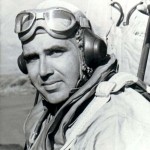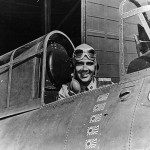destroyer

 It is common practice in the military to name destroyers (DD) and destroyer Escorts (DE) after Navy and Marine Corps heroes. The USS Reuben James (DD-245) was a four-funnel (four stack) Clemson-class destroyer made after World War I, and it was the first of three US Navy ships named for Boatswain’s Mate Reuben James (1776–1838), who distinguished himself fighting in the First Barbary War. Apparently, on August 3, 1804, James put himself between his commanding officer, Lieutenant Stephen Decatur and the sword of a Tripolitan sailor, who was trying to defend his commander. When James stepped between the descending sword and his commander, he took the blow to his head. Amazingly, the blow did not kill him, and he recovered later to continue serving in the Navy.
It is common practice in the military to name destroyers (DD) and destroyer Escorts (DE) after Navy and Marine Corps heroes. The USS Reuben James (DD-245) was a four-funnel (four stack) Clemson-class destroyer made after World War I, and it was the first of three US Navy ships named for Boatswain’s Mate Reuben James (1776–1838), who distinguished himself fighting in the First Barbary War. Apparently, on August 3, 1804, James put himself between his commanding officer, Lieutenant Stephen Decatur and the sword of a Tripolitan sailor, who was trying to defend his commander. When James stepped between the descending sword and his commander, he took the blow to his head. Amazingly, the blow did not kill him, and he recovered later to continue serving in the Navy.
The Destroyer named after Boatswain’s Mate Reuben James, was the first sunk by hostile action in the European Theater of World War II. The USS Reuben James was laid down on April 2, 1919, by the New York Shipbuilding Corporation of Camden, New Jersey, launched on October 4, 1919, and commissioned on September 24, 1920. the ship was assigned to the Atlantic Fleet. Mainly, it was being used in the Mediterranean Sea during 1921–1922. The ship went from Newport, Rhode Island, on November 30, 1920, to Zelenika, Yugoslavia and arrived on December 18th. It operated in the Adriatic Sea and the Mediterranean out of Zelenika and Gruz (Dubrovnik), Yugoslavia, assisting refugees and participating in post-World War I investigations during the spring and summer of 1921. Then, it joined the protected cruiser Olympia at ceremonies marking the return of the Unknown Soldier to the United States in October 1921 at Le Havre. From October 29, 1921, to February 3, 1922, it assisted the American Relief Administration in its efforts to relieve hunger and misery at Danzig. After completing its tour of duty in the Mediterranean, it departed Gibraltar on July 17th.
Following its tour in the Mediterranean, the ship was based out of New York City, where it routinely patrolled the Nicaraguan coast to prevent the delivery of weapons to revolutionaries in early 1926. During the spring of 1929, it participated in fleet maneuvers that helped develop naval airpower. On January 20, 1931, the Reuben James was
decommissioned at Philadelphia, only to be recommissioned on March 9, 1932. The ship again operated in the Atlantic Ocean and the Caribbean Sea, patrolling Cuban waters during the coup by Fulgencio Batista. Then, in 1934, it was transferred to San Diego. After maneuvers that evaluated aircraft carriers, the Reuben James returned to the Atlantic Fleet in January 1939.
Upon the beginning of World War II in Europe in September 1939, but before the United States joined in the fight, the Reuben James was assigned to the Neutrality Patrol, guarding the Atlantic and Caribbean approaches to the American coast. The ship joined the force established to escort convoys sailing to Great Britain in March 1941. With U-Boat attacks on the rise, this force began escorting convoys as far as Iceland, after which the convoys became the responsibility of British escorts. At that time, it was based at Hvalfjordur, Iceland, commanded by Lieutenant Commander Heywood Lane Edwards.
It would be the escort post that would be the ship in the wrong place at the wrong time. On October 23rd, it sailed from Naval Station Argentia, Newfoundland, with four other destroyers, escorting eastbound Convoy HX 156. All seemed to be going well until, at dawn on October 31st, the Reuben James was torpedoed near Iceland by German U-Boat U-552 commanded by Kapitänleutnant Erich Topp. The Reuben James had positioned itself between an ammunition ship in the convoy and the known position of a German “wolfpack.” The “wolfpack” was a group of submarines poised to attack the convoy. Apparently, the destroyer was not flying the Ensign of the United States, that might have saved it…or maybe not, since it was in the process of dropping depth charges on another U-boat when U-552 engaged. The Reuben James was hit forward by a torpedo meant for a merchant ship and the torpedo blew the entire bow off when a magazine exploded upon the torpedoes impact. The bow of the Reuban James sank immediately. The aft section floated for five minutes before going down. I can only 
 imagine the shock of those around them when the ship was gone so quickly. USS Reuben James carried a crew of seven officers and 136 enlisted men. They also had one enlisted passenger. Of the total of 144 men on board, 100 were killed, including all the officers. Only 44 enlisted men survived the attack. It was the first US warship sunk in World War II, and strangely, the destroyer was sunk before the United States had officially joined the war.
imagine the shock of those around them when the ship was gone so quickly. USS Reuben James carried a crew of seven officers and 136 enlisted men. They also had one enlisted passenger. Of the total of 144 men on board, 100 were killed, including all the officers. Only 44 enlisted men survived the attack. It was the first US warship sunk in World War II, and strangely, the destroyer was sunk before the United States had officially joined the war.

 It takes many different kinds of soldiers, foot soldiers, seamen, and airmen, to win a war. One group supports the others, and without all of them, winning a war in modern times would be next to impossible. Partly because my dad fought in World War II, I find myself most interested in that war. I am very proud of the part my dad played in shooting down enemy aircraft from his position as top turret gunner, and along with his crewmembers, providing air support for ground missions. Of course, many of the heroes who are remembered in a war, are the men in the little fighter planes. The fighting they do is very dramatic, and watching movies or documentaries about the planes they shoot down is exciting. We know of the dangers they face every time they take off, and that adds to the amazement when they are successful.
It takes many different kinds of soldiers, foot soldiers, seamen, and airmen, to win a war. One group supports the others, and without all of them, winning a war in modern times would be next to impossible. Partly because my dad fought in World War II, I find myself most interested in that war. I am very proud of the part my dad played in shooting down enemy aircraft from his position as top turret gunner, and along with his crewmembers, providing air support for ground missions. Of course, many of the heroes who are remembered in a war, are the men in the little fighter planes. The fighting they do is very dramatic, and watching movies or documentaries about the planes they shoot down is exciting. We know of the dangers they face every time they take off, and that adds to the amazement when they are successful.
During World War II, to acquire Ace status, a fighter had to shoot down five enemy planes. On February 20, 1942, the United States received it’s first Flying Ace of World War II. His name was Lieutenant Edward O’Hare. O’Hare was a US Navy fighter pilot with the Fighting Squadron 3, aboard the USS Lexington. The Lexington, sailed into the Coral Sea in mid-February, 1942. Then on February 20th, as the Lexington neared Rabaul, Japanese radar picked up the ship. Japanese bombers headed straight for it. O’Hare and his team went into action. They were piloting F4F Wildcats. In just four minutes, O’Hare shot down five Japanese G4M1 Betty bombers. This ended the Japanese attack and O’Hare became an Ace. It also ended the planned raid, because the element of surprise was gone. O’Hare was awarded the first naval Medal of Honor awarded in World War II. He was a great shot, but on November 26, 1943, his luck ran out. His plane was shot down during a nighttime fighter attack near the Gilbert Islands. It was never found. In 1945, the Navy named a destroyer the USS O’Hare after him. Later, Chicago’s Orchard Depot Airport was renamed, O’Hare international Airport after him.


O’Hare was the first ace of World War II, but he was not the Ace with the most kills in World War II…that honor belongs to a man born in the same town I was…Superior, Wisconsin. Richard Bong shot down 40 enemy aircraft before he was killed on August 6, 1945 over North Hollywood, California, while testing a P-80A jet. The plane exploded causing Major Bong’s death. The flying aces of World War II were many…too many to name here, but among the notables are Edward O’Hare, Richard Bong, and Chuck Yeager. All the aces were heroes.

